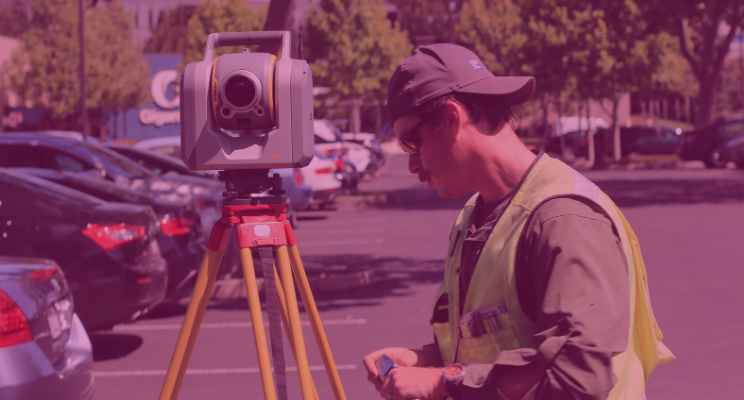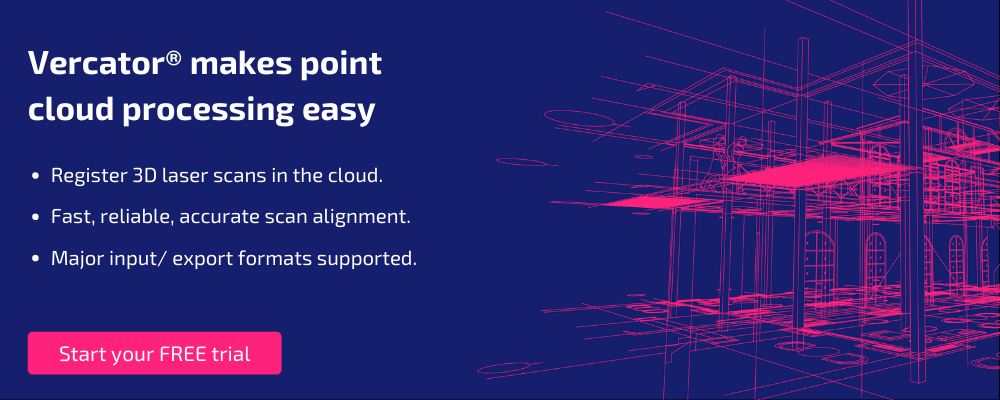Using 3D laser scanners in the cloud — the future of surveying is here

The cloud has changed business and daily life, and it’s coming for surveying next. Broad advancements impacting connectivity and bandwidth across the internet have coalesced with advances in survey technology to deliver truly robust cloud-based solutions for survey technology.
Cloud computing brings a number of interesting possibilities to the world of surveying. From in-field registration, accelerated registration of large data sets, remote working and new ways to engage with clients, transformation needs to be taken seriously.
What we will detail here are the main points you need to take into consideration when it comes to delivering on the possibilities offered by the cloud.
Understand what the cloud delivers to survey workflows
In every industry, technology is only a tool — not a solution. To deliver meaningful outcomes, you need to make updates to processes that access the benefits delivered by the technology.
For surveyors, the cloud brings flexibility, scalability and on-demand power — many of the same attributes that make the cloud so popular across the business world. Thinking about how these attributes impact workflows is key to making the right cloud investments and turning those investments into outcomes that matter.
When it comes to modelling and visualisation, remote collaboration and remote access are likely the largest benefits. For processing and registration, scalable access brings additional transformational benefits.
1. Remote Access
Cloud basics 101 revolve around remote access. Putting applications and data in the cloud delivers access where and when it is needed. This allows you to provide flexible work schedules, engage with a remote workforce and share deliverables and data iteratively with clients. For surveyors, it also delivers the possibility to start registration in the field.
With the improvement of mobile connectivity, advanced 4G connections and 5G just around the corner, running coarse registration in the field is perfectly within reason. There are a number of registration specialists, and remote applications delivered by the big-name processing software solution that allow you to get started on the time-consuming process of registration from the moment a scan is completed.
2. On-demand flexibility
Every stage of registering and modelling 3D laser scan data sets is CPU intensive — and the deliverables large to store. The bandwidth requirements have been the limiting stumbling block that has slowed the adoption of the cloud within this industry when compared to others. However, it also means the benefit of the cloud is even greater once those problems have been overcome.
The cloud offers effective access to limitless processing power and storage. It also offers that capability on-demand. This delivers the ability to access the compute power you need to complete a job when required, without the upfront costs of purchasing new hardware. This can be of huge benefit if looking to take on larger than standard clients, going through a busy season, or otherwise seeking to take on increased capabilities for a limited time.
3. Scalable power
The ability to scale processing capability not only delivers flexibility, it can increase registration speeds. Advanced processing software deploying multi-stage, vector-based registration algorithms delivers significantly robust enough results to automate cross-check. Removing manual stages enables the parallelisation of tasks.
Using traditional hardware, these same software tools can take advantage of multi-thread processors and hyperthreading to execute multiple coarse resignations simultaneously. With advanced i9-7980EX processors, that could deliver up to 36 scans at one time.
In the cloud, your ability to scale virtual cores is practically infinite. Theoretically, that delivers the possibility to scale-up access to match the demands of any job — no matter how large — and simultaneously complete coarse registration for a project of any size. The acceleration to your workflow this creates is tremendous if appropriately captured.
Getting prepared for the cloud
If you want to work in the cloud, you need the right technology. Process upgrades are key to success. But you do need to make sure that you have the right technology in place to enable those people-oriented changes.
1. Cloud-enabled software
The first investment you need to make sure you get right is software. If your processing, modelling and/or visualisation software is not cloud-capable, your ability to access the cloud will be very limited. You may still be able to use cloud storage to archive and/or share deliverables, but you will not be able to access everything the cloud has to offer.
Beyond cloud compatibility, you want to look for advanced features that will really deliver in the cloud. Particularly when it comes to registration, you need to look at advanced algorithms that can undertake paralysed actions, and take advantage of the scaling properties offered by the cloud.
You should also look into access. Some cloud software solutions bring cloud access built in — allowing you to pay on-demand for access to compute resources. Storage might be priced separately, or within the same package. You also have the possibility to engage with independent cloud hosting — integrating a subscription to AWS or Azure into your cloud processes.
2. Network infrastructure requirements
The big thing you need to remember when making a transition into the cloud is access. Any applications you will be running in the cloud, you will have to effectively access through the internet. Any files and/or data that you want to access from the cloud will have to be accessed across the internet.
Before undertaking a cloud migration, you need to rigorously assess your network connection. For in-house teams, that means looking at your standard internet package. For in-field use, you need to look at mobile connectivity. In both cases, it means upgrading to best in class network infrastructure to ensure maximum connections.
Bandwidth limits and the large demands of registration and processing software are the main reasons that cloud-enabling survey operations has trailed other industries. The level of connectivity required to operate in the cloud as a surveyor now exists. But you need to make sure you have made sufficient investments.
3. Storage vs compute: more about accessing the cloud
When assessing the investments you need to make, thinking about your use cases is important. We recommend looking to access both compute and storage cloud resource — enabling you to archive deliverables virtually, and engage with the more active cloud computing capabilities on offer. However, if all you want to do is augment your storage, many of the considerations laid out in this article do not apply, and you simply need to look at purchasing a public cloud solution from one of the many large providers on the market.
The cloud is disruptive: use that to your advantage
The cloud has changed almost every industry which it has come into contact with. The remote collaboration, scalability and flexibility open possibilities for new use cases, new workflows and new entrants into the market. By adopting to change early, you will have time to experiment with different solutions and stay ahead of the curve. That kind of forward-thinking approach is key to staying on the leading edge of the market.
Survey technology has gone through a number of interesting changes over the last few years. Standardisation of laser scanner technology and the proliferation of third-party software providers have delivered better ways to work, and more efficient processes that create new possibilities for the application of reality capture technology.
Technology is great, but it is through the creative application of technology that real change is made. Use these changes to your advantage and grow within an evolving industry to redefine how laser scanners and survey technology are deployed — in the cloud and on-premise.
Tags: laser scanner


